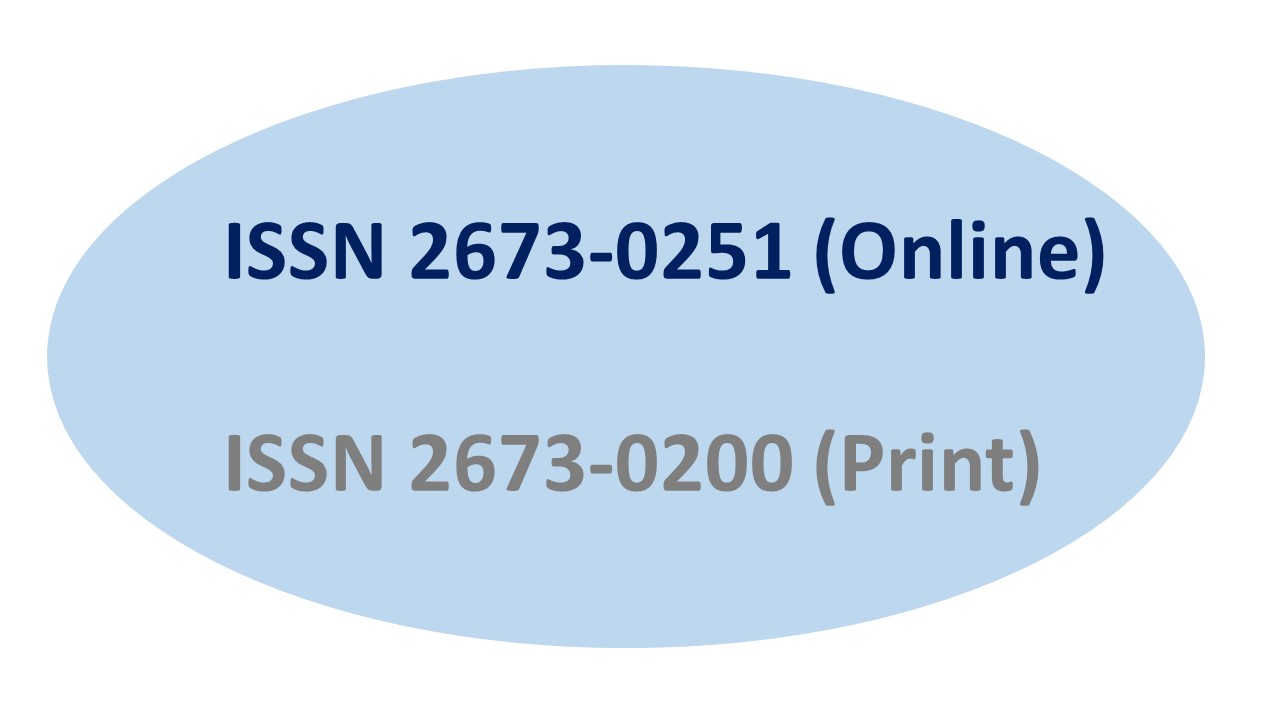Prevalence, Severity, and Factors Associated with Severity of Menopausal Symptoms among Women after Hysterectomy with Bilateral Salpingo-Oophorectomy in Thailand
Keywords:
hysterectomy with bilateral salpingo-oophorectomy, menopausal symptom, severityAbstract
Background: Menopausal symptoms can immediately occur in younger women due to a loss of ovarian function after a hysterectomy with bilateral salpingo-oophorectomy (HBSO). Additionally, some factors may increase the level of menopausal severity in these women.
Background: Menopausal symptoms can immediately occur in younger women due to a loss of ovarian function after a hysterectomy with bilateral salpingo-oophorectomy (HBSO). Additionally, some factors may increase the level of menopausal severity in these women.
Objectives: A cross-sectional study was to investigate the prevalence, severity, and related factors of menopausal symptoms among Thai women after HBSO
Methods: The research participants were 126 women, aged 20 to 50 years, and 3 months after their HBSO. The survey was conducted at a hospital-affiliated university. The socio-demographic characteristics, menstrual history, and menopausal symptoms, including vasomotor, physical, psychological, and urogenital symptoms, were collected by using the interview questionnaire. Statistical tests included frequency, percentages, and the chi-square test or Fisher’s exact test.
Results: The mean age of the women was 47.4 ± 3.9 years. The three most common symptoms of menopause included painful urination (92.8% (95%CI: 0.34-0.52)), low back pain and overall back pain (90.4% (95%CI: 0.30-0.46)) and feeling lonely (90.4% (95%CI : 0.16-0.31)) as no or mild symptoms. Additionally, the total mean score of menopausal symptoms was 27.13 ± 12.42, which indicated mild menopausal symptoms. The menopausal severity of women after HBSO was associated with age at menarche (P=0.043).
Conclusion: Most of the women reported mild menopausal symptoms 3 months after surgical menopause. Therefore, it is important to consider the appropriate treatment for this cohort of women before experiencing menopausal symptoms.
References
Abdelazim, I. A., Abdelrazak, K. M., Elbiaa, A. A. M., Farghali, M. M., Essam, A., & Zhurabekova, G. (2015). Ovarian function and ovarian blood supply following premenopausal abdominal hysterectomy. Menopause Review, 14(4), 238-242. https://doi: 10.5114/pm.2015.56312
Al-Musa, H. M., Ahmed, R. A., Alsamghan, A. S., Abadi, S., Al-Saleem, M. A. S., Abdu, A., & …Alqahtani, H. A. (2017). The prevalence of symptoms experienced during menopause, influence of socio-demographic variables on symptoms and quality of life among women at Abha, Saudi Arabia. Biomedical Research, 28(6), 2587-2595.
Benshushan, A., Rojansky, N., Chaviv, M., Arbel-Alon, S., Benmeir, A. Imbar, T., & Brzezinski, A. (2009). Climacteric symptoms in women undergoing risk-reducing bilateral salpingo-oophorectomy. Clima Cteric, 12(5), 404-409. https://doi: 10.1080/13697130902780846.
Bingöl, F. B., Bal, M. D., Esencan, T. Y., Abbasoglu, D. E., & Aslan, B. (2019). The effects of loneliness on menopausal symptoms. Clinical Experience Health Science, 9, 265-270. https://doi.org/10.33808/clinexphealthsci.533511
Bjelland, E. K., Hofvind, S., Byberg, L., & Eskild, A. (2018). The relation of age at menarche with age at natural menopause: a population study of 336788 women in Norway. Human Reproduction, 33(6), 1149-1157. https://doi: 10.1093/humrep/dey078.
Borker, S. A., Venugopalan, P. P., & Bhat, S. N. (2013). Study of menopausal symptoms, and perceptions about menopause among women at a rural community in Kerala. Journal MidLife Health, 4(3), 182–187.
Charoenkwan, K., Srisomboon, J., Suprasert, P., Phongnarisorn, C., Siriaree, S., & Cheewakriangkrai, C. (2004). Role of prophylactic oophorectomy at the time of hysterectomy in ovarian cancer prevention in Thailand. Obstetrics & Gynecology, 30(1), 20–23.
Egbe, T. O., Kobenge, F. M., Arlette, M. M. J., Eta-Nkongho, E., Nyemb, J. E., & Mbu, R. E. (2018). Prevalence and outcome of hysterectomy at the Douala General Hospital, Cameroon: A cross-sectional Study. International Journal Surgery & Respiratory Practice, 5(4), 1-8. https://doi.org/10.23937/2378-3397/1410092
El Shafie, K., Al Farsi, Y., Al Zadjali, N., Al Adawi, S., Al Busaidi, Z., & Al Shafaee, M. (2011). Menopausal symptoms among healthy, middle-aged Omani women as assessed with the menopause rating scale. Menopause, 18(10), 1113-1119. https://doi: 10.1097/gme.0b013e31821b82ee.
Freitas, L. V., Lima, T. M., de Moraes, M. L. C., Dias, M. L. B., Aquino, P. S., & Pinheiro, A. K. B. (2009). Prevalence of post-menopausal symptoms in aged women who are staying at homes for old people: a descriptive study. Online Brazilian Journal Nursing, 8(1),12-17.
Gold, E. (2011). The timing of the age at which natural menopause occurs. Obstetrics and Gynecology Clinics of North America, 38(3), 425-440. https://doi: 10.1016/j.ogc.2011.05.002.
Goodman, A. (2020). Menopause and society: the association of educational level, social status, and financial status with positive versus negative perceptions about menopause. Menopause, 27(6), 630-631. https://doi10.1097/GME.0000000000001563
Gumussoy, S., Gumussoy, M., Hortu, I., & Ergenoglu, A. M. (2020). The effect of surgical menopause after bilateral oophorectomy on hormonal changes, mucociliary clearance, and quality of life. European Archives of Oto-Rhino-Laryngology, 227, 1-8. https://doi:10.1007/s00405-020-06164-8
Hanley, G. E., Pearce, C. L., Talhouk, A., Kwon, J. S., Finlayson, S. J., McAlpine, J. N. & …Miller, D. (2022). Outcomes from opportunistic salpingectomy for ovarian cancer prevention. JAMA Network Open, 5(2), e2147343. https://doi:10.1001/jamanetworkopen.2021.47343
Im E-O. (2009). Ethnic differences in symptoms experienced during the menopausal transition. Health Care Women International Journal, 30(4), 339–355.
Kongwattananon, T. (2014). Physical therapy in hysterectomy patients. Thai Journal Physical Therapy, 36(2), 33-41.
Losif, C. S., & Bekassy, Z. (1984). Prevalence of genitor-urinary symptoms in the late menopause. Acta Obstetriciaet Gynecologica Scandinavica, 63(3), 257–260. https://doi.org/10.3109/00016348409155509
Louwers, Y. V., & Visser, J. A. (2021). Shared genetics between age at menopause, early menopause, POI and other traits. Frontiers in Genetics, 12, 1-12. https://doi: 10.3389/fgene.2021.676546
Masjoudi, M., Amjadi, M. A., Leili, E. K. N. (2017). Severity and frequency of menopausal symptoms in middle-aged women, Rasht, Iran. Journal of Clinical and Diagnostic Research, 11(8), 17-21. https://doi:10.7860/JCDR/2017/26994.10515
Masoumeh, N., Sadeghi, R., & Moghadam, Z. B. (2019). Social determinants of health in menopause: an integrative review. International Journal Womens Health, 11, 637–647. https://doi: 10.2147/IJWH.S228594
Peeyananjarassri, K., Cheewadhanaraks, S., Hubbard, M., Zoa, M. R., Manocha, R., & Eden, J. (2005). Menopausal symptoms in a hospital-based sample of women in southern Thailand. Climacteric, 9(1), 23-29.
Prusty, R. K., Choithani, C., & Gupta, S. D. (2018). Predictors of hysterectomy among married women 15-49 years in India. Reproductive Health, 15(3), 2–11. https://doi 10.1186/s12978-017-0445-8
Sardeshpande, N. (2014). Why do young women accept hysterectomy? Findings from a study in Maharashtra, India. International Journal of Innovation and Applied Studies, 8(2),579–585.
Secoșan, C., Balint, O., Pirtea, L., Grigoras, D., Balulescu, L., & Ilina, R. (2019). Surgically induced menopause-A practical review of the literature. Medicina, 55, 482-492. https://doi.10.1097/AOG.0b013e318236fe61.
Shadyab, A. H., Macera, C. A., Shaffer, R. A., Sonia, J., Gallo, L. C., Gass, M. L. S., & … LaCroix, A. Z. Ages at menarche and menopause and reproductive lifespan as predictors of exceptional longevity in women: the women’s health initiative. Menopause, 24(1), 35-44. https://doi 10.1097/GME.0000000000000710
Sievert, L. L. (2013). Comparisons of symptom experience across country and class. Menopause, 20, 594-595.
Sriboonwong, L. (2002). Perception of menopausal symptoms impact and symptoms management of menopausal women. [master’s thesis]. Mahidol University, Thailand. Available from http://www.thaithesis.org/detail.php?id=47258
Stuursma, A., van Driel, C. M. G., Wessels, N. J., de Bock, G. H., & Mourits, M. J. E. (2018). Severity and duration of menopausal symptoms after risk-reducing salpingo-oophorectomy. Maturitas, 111, 69-76.
van Lieshout, L. A. M., Steenbeek, M. P., de Hullu, J. A., Vos, M. C., Houterman, S., Wilkinson, J., & Piek, J. W. J. M. (2019). Hysterectomy with opportunistic salpingectomy versus hysterectomy alone. Cochrane Database of Systematic Review, 8(8),1-56. c https://doi: 10.1002/14651858.CD012858.pub2.
Zhang, L., Ruan, X., Cui, Y., Gu, M., & Mueck, A. O. (2020). Menopausal symptoms and associated social and environmental factors in midlife Chinese women. Clinical Interventions in Aging, 15, 2195-2208. https://doi:10.2147/CIA.S278976

Downloads
Published
Issue
Section
License
Copyright (c) 2023 International Journal of Public Health and Health Sciences

This work is licensed under a Creative Commons Attribution-NonCommercial-NoDerivatives 4.0 International License.
If the manuscript is accepted for publication, copyright of the article shall be assigned to the IJPHS. After acceptance of a manuscript, the authors will be requested to complete a copyright transfer agreement form






